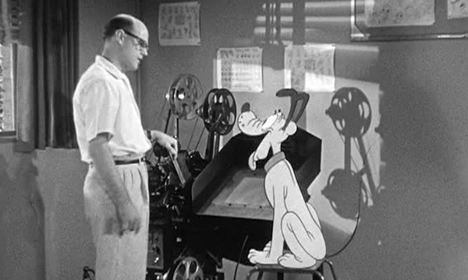The History of CinemaScope: Revolutionizing the Widescreen Experience
The Birth of CinemaScope
In the early 1950s, Hollywood faced an existential crisis. The rise of television threatened to eclipse the movie industry, as audiences increasingly chose the convenience of small-screen entertainment over the glamour of theaters. Studios needed a way to lure viewers back, and the solution came in the form of a groundbreaking widescreen technology: CinemaScope.
CinemaScope was developed by 20th Century Fox in collaboration with the inventor Henri Chrétien. Chrétien had originally created the anamorphic lens system in the 1920s, but it was Hollywood’s demand for spectacle that brought his invention to prominence. The technology allowed filmmakers to capture and project a much wider image than traditional 35mm films, offering audiences an immersive visual experience that television could not match.
The first film to utilize CinemaScope was The Robe (1953), a biblical epic directed by Henry Koster. Its release marked the official beginning of the widescreen revolution, proving that movies could still offer something extraordinary—grandeur that filled the audience’s peripheral vision and drew them deeper into the story.
How CinemaScope Worked
The key innovation behind CinemaScope was its use of anamorphic lenses. Unlike standard spherical lenses, which capture a nearly square image, anamorphic lenses squeeze a wider field of view onto the 35mm film. During projection, a corresponding lens on the projector would then "unsqueeze" the image, stretching it back to its intended widescreen ratio—originally 2.66:1, later standardized to 2.35:1.
This technique provided several advantages:
- Greater Immersion: The widened aspect ratio filled more of the viewer’s field of vision, making films feel larger than life.
- Higher Resolution: Despite using standard 35mm film, the anamorphic process allowed for higher-quality images by maximizing the film’s surface area.
- Economic Appeal: Unlike other widescreen formats that required expensive new film stocks, CinemaScope could be adopted with minimal changes to existing equipment.
The Golden Age of CinemaScope
After the success of The Robe, 20th Century Fox aggressively promoted CinemaScope as a must-see theatrical experience. Competing studios quickly followed suit, developing their own anamorphic formats or licensing CinemaScope technology. Films like How to Marry a Millionaire (1953), 20,000 Leagues Under the Sea (1954), and Oklahoma! (1955) showcased the format’s versatility, proving it could enhance everything from intimate dramas to grand musicals.
Directors embraced the possibilities of the extra-wide frame. In Rebel Without a Cause (1955), Nicholas Ray used the elongated aspect ratio to emphasize the isolation and tension between characters. Meanwhile, William Wyler’s Ben-Hur (1959) employed CinemaScope to breathtaking effect in its legendary chariot race, immersing audiences in the heart-pounding action.
Challenges and Limitations
Despite its success, CinemaScope was not without flaws. Early iterations suffered from a phenomenon known as the "CinemaScope mumps," where actors’ faces appeared slightly distorted near the edges of the frame due to lens imperfections. Additionally, the exaggerated width posed challenges for composition—directors had to rethink blocking and staging to avoid leaving empty spaces in the frame.
Another issue was the requirement for theaters to install specialized CinemaScope-compatible projectors and screens. Many smaller cinemas struggled with the cost, leading to uneven presentation quality. Nevertheless, the format’s popularity ensured rapid adoption, and by the late 1950s, widescreen films had become the industry standard.
Legacy and Influence
CinemaScope not only revitalized Hollywood but also set the foundation for modern widescreen filmmaking. The widespread adoption of anamorphic techniques influenced later formats like Panavision and Super 35, ensuring that widescreen cinema remained a defining feature of the movie-going experience.
Even as digital projection and IMAX have expanded the boundaries of cinematic spectacle, the spirit of CinemaScope endures. Filmmakers like Quentin Tarantino, Wes Anderson, and Christopher Nolan continue to favor anamorphic lenses for their unique aesthetic qualities—proving that Henri Chrétien’s invention remains as vital today as it was in the 1950s.
The first chapter of CinemaScope’s history illustrates how necessity and ingenuity transformed the film industry. Yet, the story doesn’t end there. The evolution of widescreen technology and its cultural impact would continue to unfold in unexpected ways.
The Evolution of CinemaScope: Technological Advances and New Horizons
By the mid-1950s, CinemaScope had cemented its place in Hollywood, but the technology was far from static. Engineers and filmmakers continuously refined the format, addressing early limitations and pushing creative boundaries. One major advancement came in 1957 with the introduction of CinemaScope 55—a variant designed to improve image quality by using larger 55mm film stock rather than standard 35mm.
Films like Carousel (1956) and The King and I (1956) were shot in this enhanced format, offering greater clarity and richer color reproduction. Unfortunately, the extra expense of CinemaScope 55 discouraged widespread adoption, and the rise of cheaper Panavision lenses eventually sidelined the format. Still, its brief existence demonstrated Hollywood’s relentless pursuit of visual perfection.
The Sound Revolution: From Stereophonic to Magnetic Strips
CinemaScope wasn’t just a visual innovation—it revolutionized sound as well. Early CinemaScope releases utilized four-track magnetic stereo sound, a dramatic upgrade from the optical mono tracks of traditional films. Theater owners had to install new magnetic sound heads and additional speakers to deliver immersive audio that matched the widescreen spectacle.
This technological leap allowed for directional audio effects, enhancing realism in scenes like the roaring crowds of Ben-Hur or the musical numbers of South Pacific (1958). However, the high costs of upgrading theater sound systems led to inconsistencies in presentation, with some venues reverting to optical sound for budgetary reasons. Nevertheless, CinemaScope’s influence persisted, paving the way for modern surround-sound formats like Dolby Atmos.
Challenges from Competing Formats
Despite its dominance, CinemaScope faced fierce competition from other widescreen technologies. Paramount’s VistaVision, introduced in 1954, opted for a horizontal 35mm film transport system, capturing sharper images without anamorphic distortion. Meanwhile, Cinerama—a three-projector behemoth—offered even greater width and curvature but at a prohibitive cost.
Perhaps the most significant rival was Panavision, which emerged in the late 1950s with superior anamorphic lenses that eliminated the "CinemaScope mumps." By the 1960s, Panavision had eclipsed CinemaScope as the preferred anamorphic format, thanks to its reliability and studio-friendly licensing model. 20th Century Fox eventually abandoned CinemaScope in 1967, rebranding its widescreen productions under the "Panavision" name.
The Decline of the Original CinemaScope Era
The gradual shift away from CinemaScope was driven by both technological and economic factors. The expense of proprietary lenses, combined with the success of Panavision’s alternatives, made CinemaScope less
The Enduring Legacy of CinemaScope in Modern Filmmaking
Though CinemaScope as a branded format faded by the late 1960s, its influence never truly disappeared. The fundamental principles of anamorphic widescreen cinematography shaped the visual language of cinema, continuing to inspire filmmakers to this day. Even as digital technology has transformed production and exhibition, the allure of the elongated frame remains a powerful storytelling tool.
The Digital Age and the Renaissance of Anamorphic Filmmaking
With the advent of digital cameras and projection, many predicted the death of film-based techniques—yet the opposite occurred. Directors and cinematographers rediscovered the artistic qualities of anamorphic lenses, embracing their unique optical characteristics. The lens flares, shallow depth of field, and subtle distortions once considered flaws became sought-after aesthetic signatures.
Modern filmmakers like Damien Chazelle (La La Land, 2016) and Denis Villeneuve (Blade Runner 2049, 2017) deliberately shoot on anamorphic lenses to evoke the grandeur of classic widescreen cinema. Meanwhile, streaming platforms such as Netflix and Amazon Prime have adopted ultra-widescreen aspect ratios for original productions, ensuring that the immersive scope pioneered by CinemaScope remains relevant in the era of home viewing.
Preservation and Nostalgia in Contemporary Cinema
As film preservation efforts intensify, original CinemaScope prints have become prized artifacts. Restorations of classics like The Robe and Ben-Hur have reintroduced these films to new audiences, often screened in theaters with their intended aspect ratios intact. Film festivals and specialty cinema chains, such as Alamo Drafthouse, frequently host retrospectives celebrating the golden age of widescreen spectacles.
Beyond restoration, contemporary directors pay homage to the era through stylistic choices. Quentin Tarantino’s The Hateful Eight (2015) was famously shot in Ultra Panavision 70—a format directly descended from CinemaScope’s innovations. Similarly, Paul Thomas Anderson’s Licorice Pizza (2021) used vintage anamorphic lenses to recreate the warmth and texture of 1970s cinema.
From Theaters to Living Rooms: The Widescreen Home Experience
The rise of high-definition televisions and ultrawide monitors has brought CinemaScope-like immersion into domestic spaces. Home theaters now replicate the aspect ratios of classic films, thanks to adjustable masking systems and streaming services that preserve original framing. Cinephiles can appreciate the full width of Lawrence of Arabia (1962) or 2001: A Space Odyssey (1968) without the cropping that plagued early VHS and DVD releases.
Yet challenges remain. Many older films shot in CinemaScope were improperly formatted for television broadcasts, leading to awkward pan-and-scan versions that distorted compositions. Advocacy by film historians and organizations like the American Film Institute has pushed for correct aspect ratio presentations, ensuring that future generations experience these works as intended.
The Future of Widescreen Storytelling
As virtual reality (VR) and augmented reality (AR) redefine immersive media, the lessons of CinemaScope continue to resonate. Filmmakers experimenting with 360-degree narratives still grapple with many of the same questions—how to guide the viewer’s eye, how to balance spectacle with intimacy, and how to use technology to deepen emotional engagement rather than overshadow it.
Meanwhile, advancements in LED volume stages (popularized by productions like The Mandalorian) allow for real-time widescreen environments, blending practical sets with digital backdrops. These innovations echo CinemaScope’s original promise: to transport audiences into expansive, believable worlds.
Conclusion: A Revolution That Never Ended
CinemaScope’s journey—from a technological gamble to a lasting artistic standard—proves that innovation in cinema is cyclical rather than linear. What began as a studio’s desperate bid to compete with television became a timeless aesthetic, continuously reinvented by new generations of storytellers. The format’s ability to amplify emotion, emphasize scale, and envelop audiences remains unmatched, ensuring that its legacy endures far beyond the era of its invention.
As long as filmmakers seek to create unforgettable visual experiences, the spirit of CinemaScope will live on—not as a relic of the past, but as a foundation for the future.
















/2025/05/15/image-6825a50e43ed9132162831.jpg)

Comments